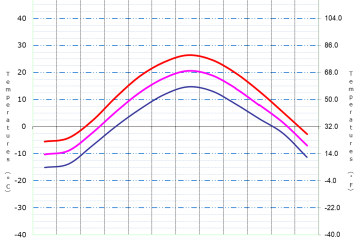Chicago vs Montréal: A Cultural and Climatic Comparison

Introduction
As two prominent cities in North America, Chicago and Montréal boast rich histories, diverse cultures, and vibrant communities. Each city serves as a unique representation of its country’s values and lifestyle, making the comparison between them a fascinating topic for residents and tourists alike. Understanding the differences and similarities between Chicago and Montréal can enhance travel experiences and foster appreciation for the cultural diversity present in North America.
Geographical and Climatic Differences
Chicago, located on the southwestern shore of Lake Michigan in the United States, experiences a humid continental climate, characterized by hot summers and cold winters. In contrast, Montréal, situated on the Island of Montréal in Canada, also has a humid continental climate but with more pronounced snowfalls during winter due to its higher latitude. The distinct weather patterns influence outdoor activities available in each city throughout the year, with Chicago hosting a range of summer festivals while Montréal is famous for its winter wonderland experiences.
Cultural Landscape
Chicago is known for its iconic skyline, including the Willis Tower and John Hancock Center, and its thriving arts scene. The city’s rich musical history has birthed genres like blues and house music, with numerous festivals showcasing local talent. On the other hand, Montréal prides itself on its blend of French and English culture, evident in its architecture, spoken languages, and culinary experiences. The city is home to the renowned International Jazz Festival and the world-famous Just for Laughs comedy festival, attracting tourists from across the globe. Both cities promote vibrant art scenes with world-class museums and galleries, fostering a unique cultural identity.
Culinary Thrills
When it comes to cuisine, both cities are celebrated for their gastronomic offerings. Chicago is famous for its deep-dish pizza, hot dogs, and diverse ethnic neighborhoods, where one can experience authentic dishes from various cultures. In contrast, Montréal is recognized for its unique foods like poutine, smoked meat sandwiches, and bagels, which are often compared to their New York counterparts. The culinary scene in both cities reflects their cultural diversities, providing visitors with a delightful dining experience.
Conclusion
In summary, the comparison between Chicago and Montréal highlights the rich cultural tapestries that make each city distinct. While both cities boast vibrant cultures, diverse culinary delights, and unique climatic conditions, they also share a passion for art, music, and festivals. Understanding these differences can help individuals appreciate the uniqueness of each city, whether they are planning a trip or simply looking to explore the cultural landscape of North America. Embracing these diversities allows for a deeper connection with one’s surroundings, fostering an appreciation for the beautiful dichotomy of urban life.









